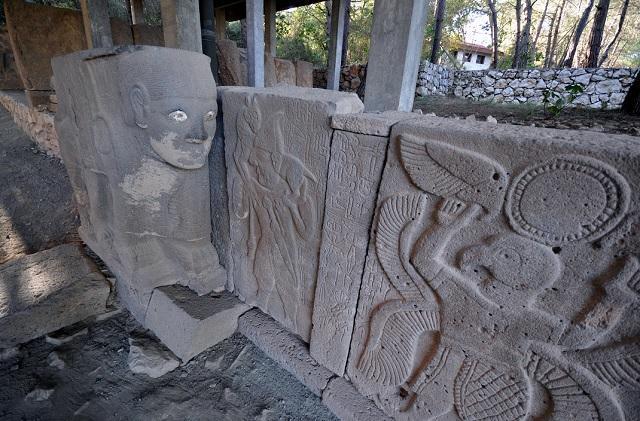Karatepe Aslantaş to become new face of Turkey
OSMANİYE

The Karatepe Aslantaş Archaeological Area, which was included in the UNESCO World Heritage Tentative List last week, is set to become the new promotional face of the southern province of Osmaniye and Turkey.
The Karatepe Aslantaş Open Air Museum, located within the borders of Kadirli district and which has survived for centuries, hosts thousands of local and foreign visitors throughout the year.
The archaeological works that have been carried out in the area since 1946 unearthed an inscription belonging to the late Hittite period ruler Asativatas, sculpture and tools used by people of that period.
The most important feature of the region in terms of history was the presence of a key that allowed the reading of the Hittite hieroglyphs, which were found during the excavations and which were not fully resolved before.
Thanks to the key, while Hittite writings can be read in the world, all of the hieroglyphic writings dating back to 2,000 B.C. in Anatolia could also be read with this key.
The work was initiated by the Kadirli District Governor’s Office and Kadirli Education and Culture Foundation (KA-VAK) for the 2,700-year-old historical region to be included in the UNESCO World Heritage List, and the report was sent to the Culture and Tourism Ministry.
As a result of these works, the Karatepe Aslantaş Archaeological Area was included of the UNESCO World Heritage Tentative List as one of the five cultural assets from Turkey.
“Halet Çambel, the archaeologist we lost six years ago, is the biggest contributor to this region. He made great efforts to uncover this place and turn it into a museum. We commemorate him,” Kadirli Governor Ahmet Arık said.
Arık said that the listing of the museum is a great opportunity in terms of publicity, adding, “Due to coronavirus, our museum is unfortunately closed, but when the danger of the virus disappears, we welcome all local and foreign visitors to our museum and district.”
Explaining that they made intense efforts to promote Karatepe Aslantaş at every location, Varmış said, “It was a tiring but enjoyable work, but the result was very delightful. We achieved the first step of our dream. Our goal is to enter the UNESCO World Cultural Heritage List.”
Journey started in 1934
Stating that the history of the discovery of the Karatepe-Aslantaş archaeological site dates back to 1939, Varmış stated that someone who was a primary school teacher in Kadirli carried out the first official excavations in 1946.
He said that later on the research team, including German archaeologist Professor Bossert and Professor Halet Çambel, had started the excavations.
“With the devoted efforts of Halet Çambel until 2010, Karatepe-Aslantaş has survived until present day. The region where Karatepe-Aslantaş is located was taken under protection in 1958 and declared as a national park. The conservation roofs, which were built as a special design, were also accepted by the experts that they provided the required criteria to be on the UNESCO World Heritage List with their characteristics such as revealing the architectural, social and political structure of the period,” he said.
















